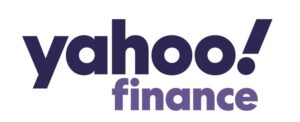By Zach Jones
Student debt in the United States has reached a staggering $1.5 trillion, but many students know very little about their own loans and how they factor into that giant number.
When college students defer to their parents on loan decisions, they typically rely on their parents to do the research and pick the type of loan. This decision will ultimately affect the types of repayment options available once the students graduate.
“I was kept in the dark really. My parents took care of picking what type of loan I got, and I was never aware that the type of loan could affect my repayment options,” said Michael Ackerman, a student at The University of North Georgia.
However, the type of loan can limit students’ options when it is time to repay.
A study reported by USA Today showed that 90 percent of student loans are through programs backed by the federal government. Those students have a much broader choice of repayment plans than students who hold the 10 percent of private loans.
“My parents ended up signing me up for a Parent-Plus loan through the government, so I have more options for paying my loans back,” said Ackerman.
Students who have a loan through the federal government get to choose among eight different payment plans. These plans include terms from 10-25 years and two different ways of structuring the monthly payment, according to Studentaid.gov.
The two different structures debtors can choose to repay their loans are basic repayment plans or income-driven repayment plans. Income-driven plans take a percent ranging from 10-20 percent of the person’s discretionary income each month. The basic repayment plans start with a standard payment, which students are entered into automatically. They can then choose to remain with that plan or change it.
With a graduated repayment plan, the person in debt starts off with a low monthly payment that increases every two years for 10 years. Finally, there is the extended plan that allows students to pay off their loans at a consistent monthly rate for an extended span of 25 years.
“A lot of times private student loans are used to cover whatever is left from the federal loans, so we always tell people to apply for federal loans before anything else,” said Kinsey Jensen of the Wells Fargo Student Loan Department.
There are no requirements for students to learn about repayment plans during their time in school. Therefore, students graduate and get put into a basic standard repayment plan by default and never change it even though a different plan might fit them better.
An option many students miss out on involves refinancing their loans to get a lower interest rate. Some students also have the option to get loan forgiveness depending on their major, field of work and more.
For example, if a graduate gets a job in the government or in some types of non-profit work, the student can apply for the Public Service Loan Forgiveness. This is just one of the many work- based forgiveness programs available. Other forgiveness programs are available for teachers, and those who join the armed forces or practice certain types of law, according to Studentaid.gov.
Zach Jones is a journalism student at the University of Georgia.





